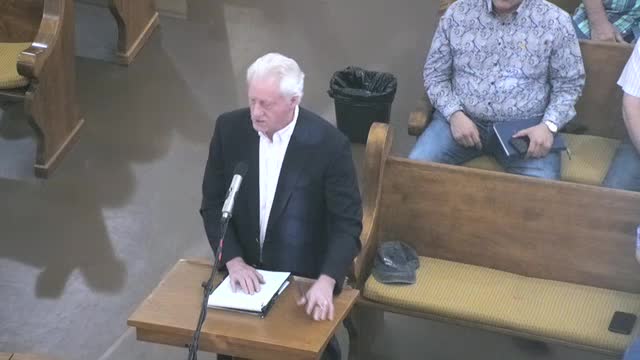County proposes tax rate cut while boosting employee benefits
August 07, 2024 | Johnson County, Texas
This article was created by AI summarizing key points discussed. AI makes mistakes, so for full details and context, please refer to the video of the full meeting. Please report any errors so we can fix them. Report an error »

In a recent government meeting, officials discussed significant updates regarding property taxes, budget priorities, and fire safety measures for the upcoming fiscal year.
Dwayne Goulding, a member of the CAD board, highlighted the recent 5% increase in the homestead exemption, acknowledging its positive reception among homeowners. However, he cautioned that this adjustment effectively shifts the tax burden from homeowners to businesses, creating a \"hidden tax\" that may not be immediately apparent to the public. Goulding emphasized the need for transparency in the property tax system and announced plans to create a podcast to educate residents on how the system operates.
Peter Svensson, a long-time resident, expressed his frustration with the local tax appraisal office, accusing it of mismanagement and lack of accountability. He raised concerns about the office's disregard for established mathematical formulas in property valuation, which he argued leads to unfair tax assessments. Svensson's comments underscored a growing sentiment among residents regarding the need for reform in the appraisal process.
The meeting also addressed fire safety, with Marshall Moore recommending a countywide burn ban due to rising fire risks. The ban is set to take effect on August 12, following a careful assessment of local fuel moisture levels and weather forecasts. Moore noted that while current conditions are manageable, the potential for significant wildfires looms as temperatures rise.
In terms of budget discussions, officials outlined a proposed budget that aims to maintain the current tax rate while increasing funding for public safety and infrastructure. The proposed budget includes a reduction in the tax rate from 38.5 cents to 37.9 cents, alongside an increase in the local homestead exemption from 3% to 5%. This budget prioritizes employee welfare, with no changes to health insurance contributions and plans for a new longevity pay structure to reward long-term employees.
Overall, the meeting highlighted key issues affecting the community, including property tax transparency, fire safety preparedness, and budgetary constraints, reflecting the ongoing challenges faced by local government in balancing fiscal responsibility with public service needs.
Dwayne Goulding, a member of the CAD board, highlighted the recent 5% increase in the homestead exemption, acknowledging its positive reception among homeowners. However, he cautioned that this adjustment effectively shifts the tax burden from homeowners to businesses, creating a \"hidden tax\" that may not be immediately apparent to the public. Goulding emphasized the need for transparency in the property tax system and announced plans to create a podcast to educate residents on how the system operates.
Peter Svensson, a long-time resident, expressed his frustration with the local tax appraisal office, accusing it of mismanagement and lack of accountability. He raised concerns about the office's disregard for established mathematical formulas in property valuation, which he argued leads to unfair tax assessments. Svensson's comments underscored a growing sentiment among residents regarding the need for reform in the appraisal process.
The meeting also addressed fire safety, with Marshall Moore recommending a countywide burn ban due to rising fire risks. The ban is set to take effect on August 12, following a careful assessment of local fuel moisture levels and weather forecasts. Moore noted that while current conditions are manageable, the potential for significant wildfires looms as temperatures rise.
In terms of budget discussions, officials outlined a proposed budget that aims to maintain the current tax rate while increasing funding for public safety and infrastructure. The proposed budget includes a reduction in the tax rate from 38.5 cents to 37.9 cents, alongside an increase in the local homestead exemption from 3% to 5%. This budget prioritizes employee welfare, with no changes to health insurance contributions and plans for a new longevity pay structure to reward long-term employees.
Overall, the meeting highlighted key issues affecting the community, including property tax transparency, fire safety preparedness, and budgetary constraints, reflecting the ongoing challenges faced by local government in balancing fiscal responsibility with public service needs.
View full meeting
This article is based on a recent meeting—watch the full video and explore the complete transcript for deeper insights into the discussion.
View full meeting
